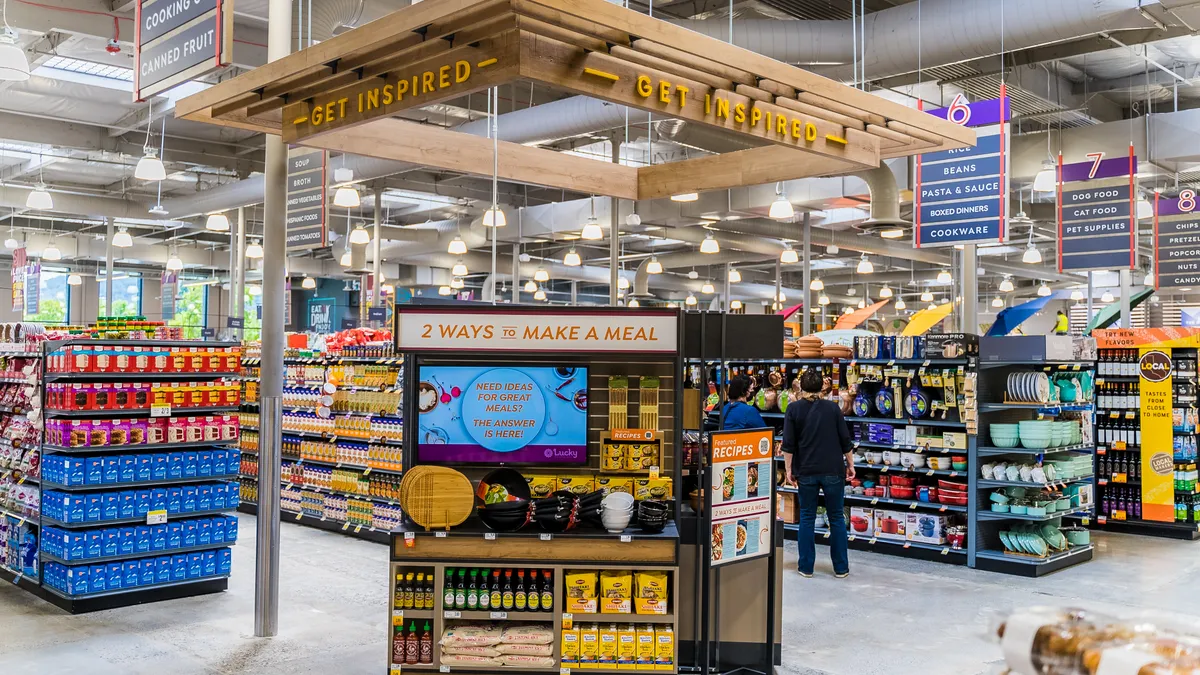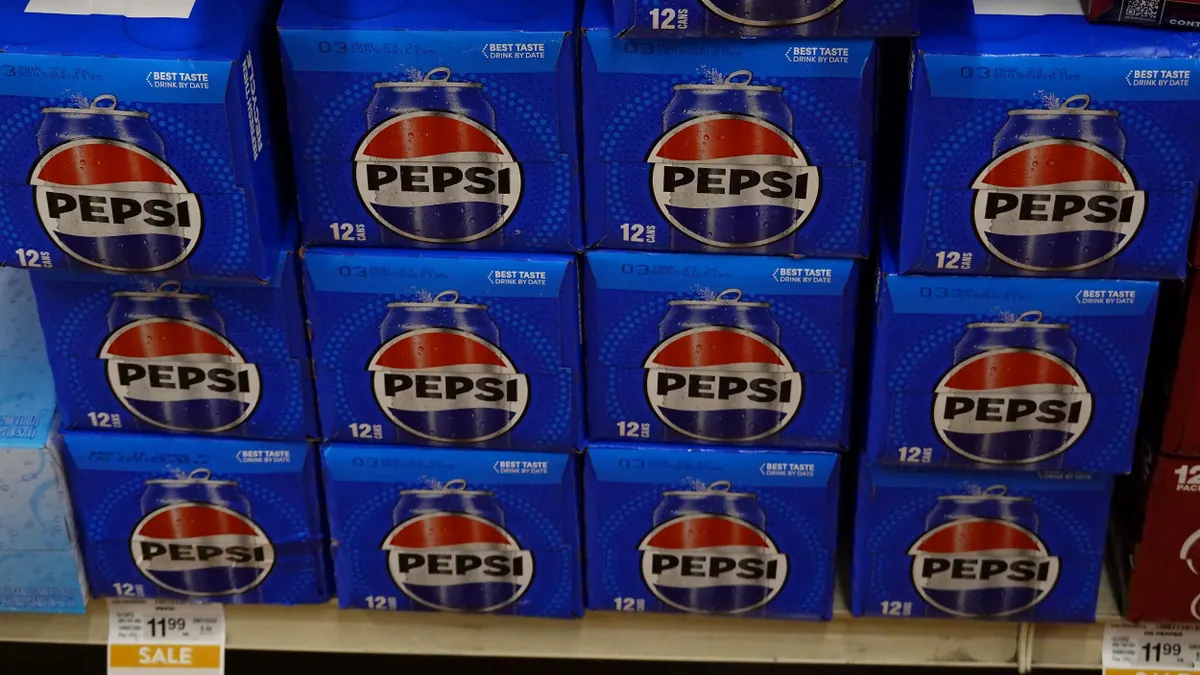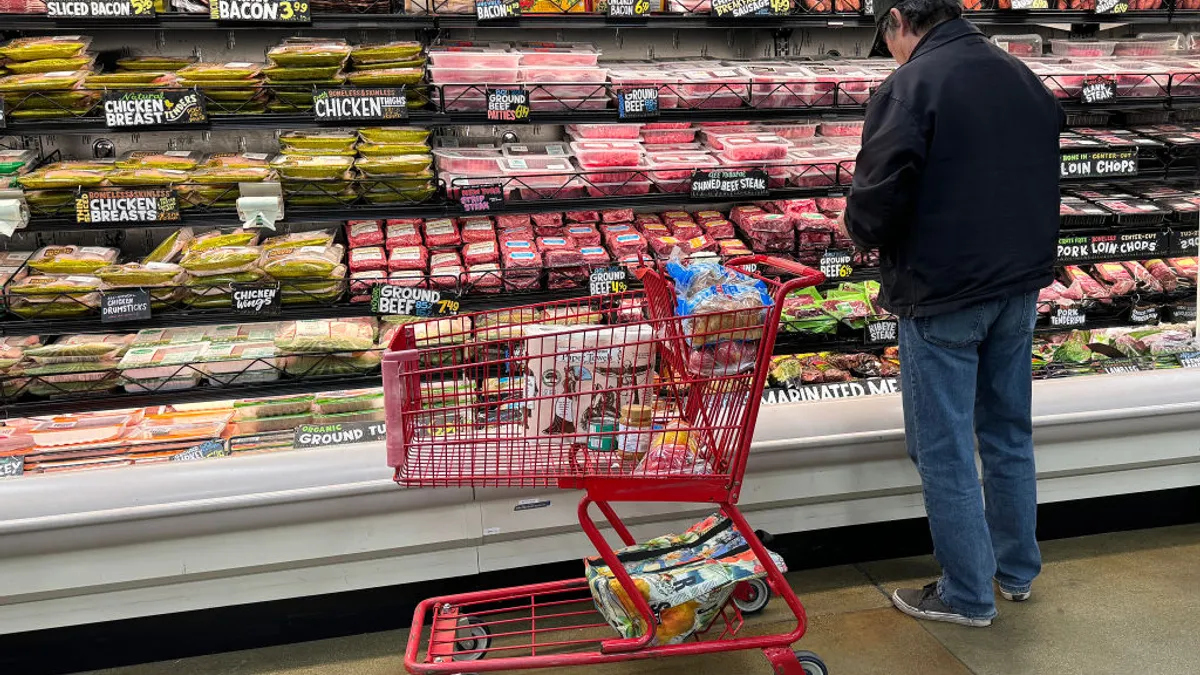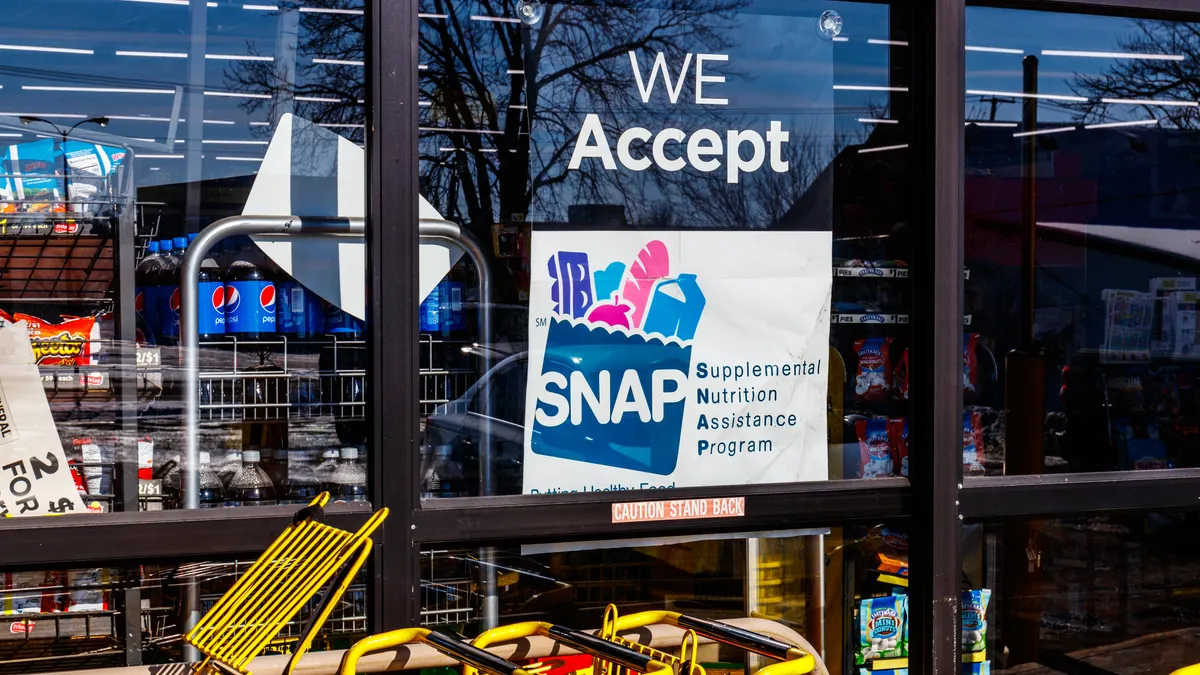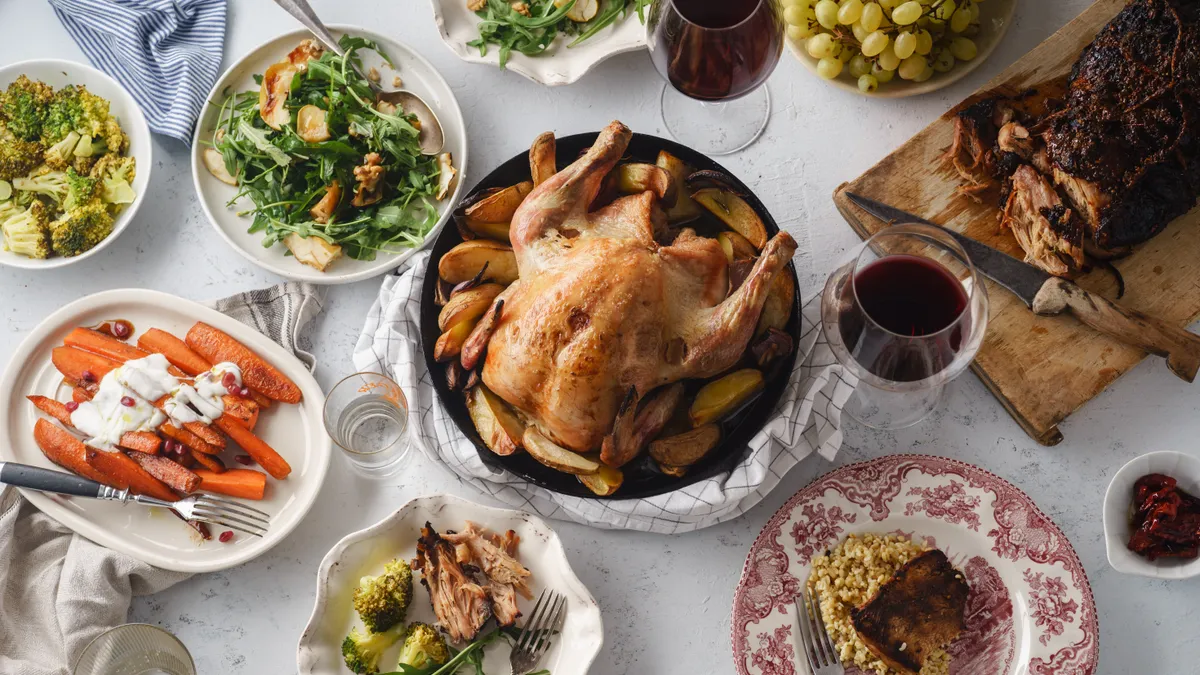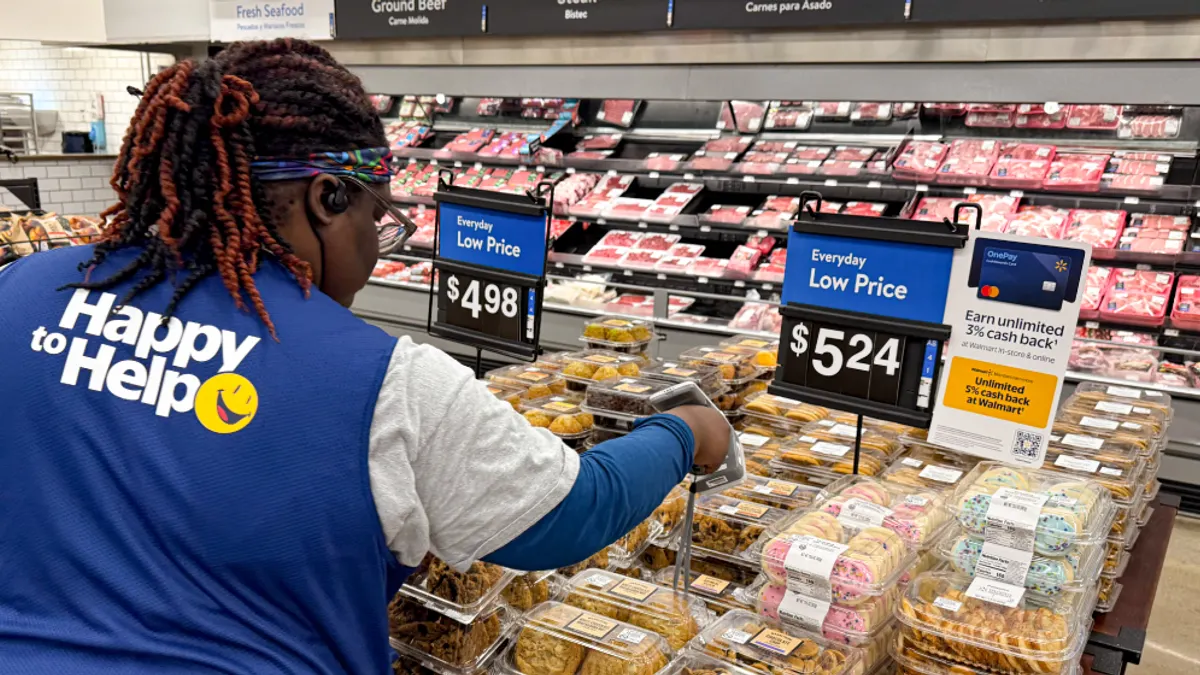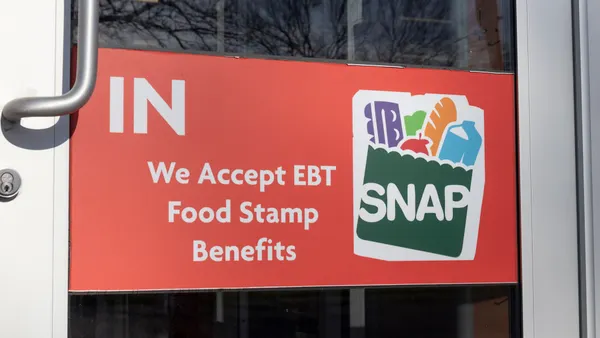This article is the last in a four-part series exploring the opportunities and challenges retailers face in center store. The full series is posted here.
When it comes to store design updates, grocers have focused most of their attention on the perimeter in recent years. They’ve revitalized produce, expanded their prepared foods displays, introduced new in-store dining concepts and debuted order-ahead delis.
Center store, on the other hand, with its typically long aisles of packaged products, hasn’t been a hub of innovation. That’s starting to change as retailers, flush with cash from formerly sluggish departments like frozen foods and eager to keep shoppers flowing in, are testing out new design flourishes aimed at making shopping the center aisles more enticing.
According to industry sources, grocers aren’t ready to completely reconfigure the center store just yet. They have too many promotional dollars tied into it and don’t want to risk impeding one-stop shopping. What they are doing is testing out subtle changes like destination departments and new merchandising displays that pique shoppers’ interest and break down traditional barriers between fresh, ambient goods and general merchandise.
Nicholas Bertram, president and CEO of The Giant Company, which has been trying out center store merchandising strategies at its newest locations, said grocers need to be willing to shake up the traditional approach of long aisles piled high with goods.
“What we've learned is that if you stop trying to be cookie cutter in center store, it's amazing what happens,” he said.
Here are several design innovations that grocers are bringing to the center store.
Interrupting those long aisles
The traditional center store configuration centered around tall, lengthy rows of aisles offers shoppers a wealth of options. But design experts say it also can overwhelm them and dampen any drive to discover new products.
“Traditional aisles are designed like freeways,” said Kevin Kelley, principal and co-founder of Shook Kelley, a design firm in the restaurant and grocery industries. “Our goal is to slow shoppers down.”
To this end, retailers are interrupting those long banks of merchandise. Hy-Vee’s new flagship store in Grimes, Iowa, has TV screens in the middle of some center aisles, and in others it’s installed store-branded coolers carrying products like soups, fresh pasta and frozen meals.
“We're trying to create points of interruption throughout the store,” said Jeremy Gosch, Hy-Vee’s co-chief operating officer.
Sprouts Farmers Market’s new store format, at around 25,000 square feet, doesn’t feature a voluminous center store selection. But executives are still trying to play up top performers and mix up the aisle layout, said Rick Redpath, managing director with Nadel Architects, which designed the new format for the specialty retailer.
Frozen products, which have been strong performers for Sprouts and other retailers during the pandemic, appear in the center of Sprouts' newest stores in displays that run perpendicular to the other center aisles, interrupting the front-to-back traffic flow.
“Instead of putting frozen all the way in the back or all the way at the front, it’s center and on a cross access with the rest of center store,” said Redpath.
Grocers don't have to place packaged goods in the center of the store, Redpath noted. For years, Sprouts has put produce in the heart of its shops. Some foodservice-focused grocers like Wegmans are pushing center store shelving to the edges of some stores. In Chicago, Dom's Kitchen & Market puts dining concepts front and center, with packaged goods set off in the margins.
Redpath said retailers should also make sure their center store aisles don't reach too high, as doing so can hide merchandise and create a closed-in feeling for shoppers.
"Keep the section visible — don't cover it up," he said. "It's counterproductive to have all that high shelving that just buries those areas. If you can, have sightlines that draw the eye to that center store."
Installing destination departments
Some grocers are turning up the volume on key departments like beverages and baby needs by setting up store-within-a-store destinations characterized by wide assortments and attractive merchandising.
Hy-Vee’s Grimes store features a candy shop in the middle of the store, complete with an oversized gumball machine. The store has a home goods destination that runs adjacent to the main block of center aisles where shoppers walk through island displays of kitchenware.
The Giant Company is also carving out destination departments in its center aisles. Its store in Camp Hill, Pennsylvania, that reopened last year features a new pet center with unique gondola merchandising and a branded section for Blue Diamond products, said Bertram. The store also has a baby needs destination complete with diapers, baby food and other items.
At the company’s location that just opened at 2201 Cottman Avenue in Philadelphia, shoppers can find a “global flavors” destination that includes international foods and ingredients pulled in from around the store.
Tanja Ebner, principal with consulting firm Oliver Wyman, said highlighting departments this way can help shoppers easily locate them and make a quick trip. Retailers are also recasting departments around different consumer needs.
“Something we see is grocers breaking up the department structure and reorganizing planograms and shelves more along customer decision trees and consumer trends,” she said.
Offering digital touchpoints
Amazon Fresh stores feature digital kiosks where customers can ask AI assistant Alexa for help. Last year, Walmart announced a new store format where shoppers are encouraged to download the company app and use it to navigate stores, learn more about products and use the Scan & Go checkout feature.
These digital touchpoints underscore the opportunity for retailers to infuse technology in their center aisles that boost customer service and shopping efficiency. Gosch said Hy-Vee has added digital kiosks in sections like CBD and vitamins where shoppers may need assistance.
At its Grimes store, Hy-Vee has also placed product search kiosks at the end of select center store aisles.
“We’ve tried to get answers for customers that don’t even know they need a solution and try to help get traffic into those aisles by offering some of those digital solutions,” Gosch said.
Grocers are also adding scannable tags in center store aisles that help shoppers learn more about the products they're buying. Fresh Thyme Market recently introduced scannable ELI codes in its Natural Living department that provides info on select items. At Hy-Vee stores, shoppers are encouraged to scan QR codes that link to the company's digital circular.
Pulling out center store products to create meal solutions
Nearly two years into the pandemic, many shoppers are still looking to make quick store trips, said Ebner. Offering meal solution displays that combine fresh and shelf-stable products can be operationally complex, requiring close coordination between department managers. But doing so can provide helpful "shortcuts" that inspire customers and help them shop more efficiently, she said.
Lucky California’s flagship store that opened this spring in Pleasanton, California, has featured recipe displays and has an island that organizes fresh and packaged items along with home goods around home entertaining solutions. In a similar vein, PCC Community Markets stores in Seattle have featured recipe displays tied to its “Shared Values” meals, which rotate monthly and incorporate canned and packaged ingredients to create a four-person meal for around $10.
At The Giant Company’s Riverwalk store in downtown Philadelphia, spices appear directly across from the meat department, and sections like “plant based” combine fresh, frozen and packaged goods into novel departments.
“Instead of fresh versus ambient, you’ve actually got customer solutions and a floor plan that reflects that,” said Bertram.
As store traffic has normalized and shoppers have grown more comfortable with in-store shopping, retailers have also reintroduced sampling programs that display popular products and show consumers how to prepare signature dishes. Redpath said grocers should position sampling stations in front of center store aisles, inviting shoppers to discover new products. Cooking demonstrations, meanwhile, could show customers how to use items in sections like baking, pasta and condiments.
“I think that's a real area that is untapped,” he said. “That could could grow because people in stores are still seeking out advice.”
There’s no reason why retailers can’t create drinking and dining experiences in the center store, too, said Ebner. Some grocers, like The Giant Company and Kroger Marketplace, have set down bars inside or adjacent to their alcohol departments.
“The beer aisle might not be so exciting, but when you combine it with the beer garden, that's a whole different experience,” she said.


